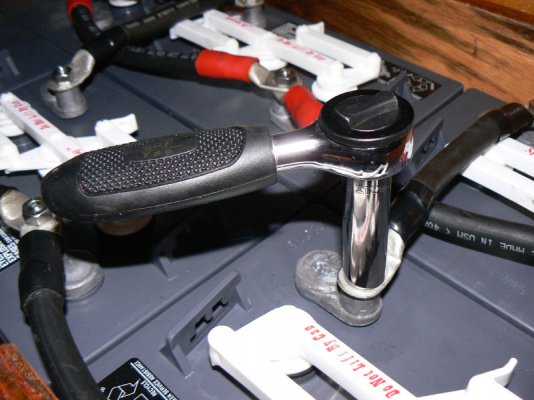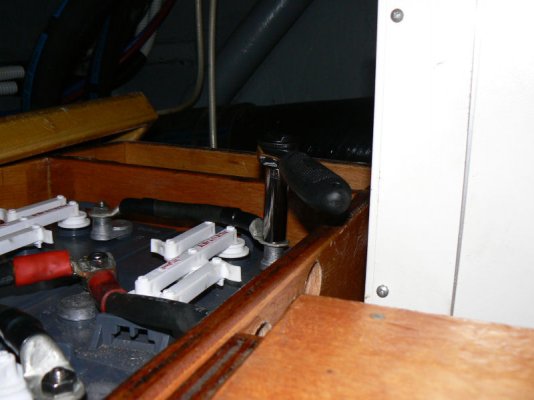Tom
Administrator
- Joined
- Jan 13, 2005
- Posts
- 51,904
This isn't very techie and is probably ho-hum to some folks, but I thought I'd share this little tip. I've been meaning to write this for some time, but kept forgetting to snap photos.
When you remove wires/links from battery terminals, has your wrench accidentally touched another terminal or another battery or some grounded metal? If not, you either don't check/clean your battery connections very often or you're way more careful than yours truly. Next time I'm at the coach I'll snap a photo of a burn mark on the (grounded) metal case of a solenoid adjacent to one of the batteries.
It was actually the golf cart batteries on our boat that finally made me think of this simple solution. In this case, I have 10 batteries which I check regularly for electrolyte level, but some links between adjacent batteries get in the way of removing the fill caps. The fix was to buy a small socket wrench with a rubberized handle and to use a deep socket. See the attached photos (I just noticed that I ignored my new-found photography knowledge and didn't pay attention to depth of field).
When you remove wires/links from battery terminals, has your wrench accidentally touched another terminal or another battery or some grounded metal? If not, you either don't check/clean your battery connections very often or you're way more careful than yours truly. Next time I'm at the coach I'll snap a photo of a burn mark on the (grounded) metal case of a solenoid adjacent to one of the batteries.
It was actually the golf cart batteries on our boat that finally made me think of this simple solution. In this case, I have 10 batteries which I check regularly for electrolyte level, but some links between adjacent batteries get in the way of removing the fill caps. The fix was to buy a small socket wrench with a rubberized handle and to use a deep socket. See the attached photos (I just noticed that I ignored my new-found photography knowledge and didn't pay attention to depth of field).
- The deep socket keeps the wrench handle high above an adjacent terminal.
- The rubberized handle prevents accidental grounding on the adjacent generator box.


